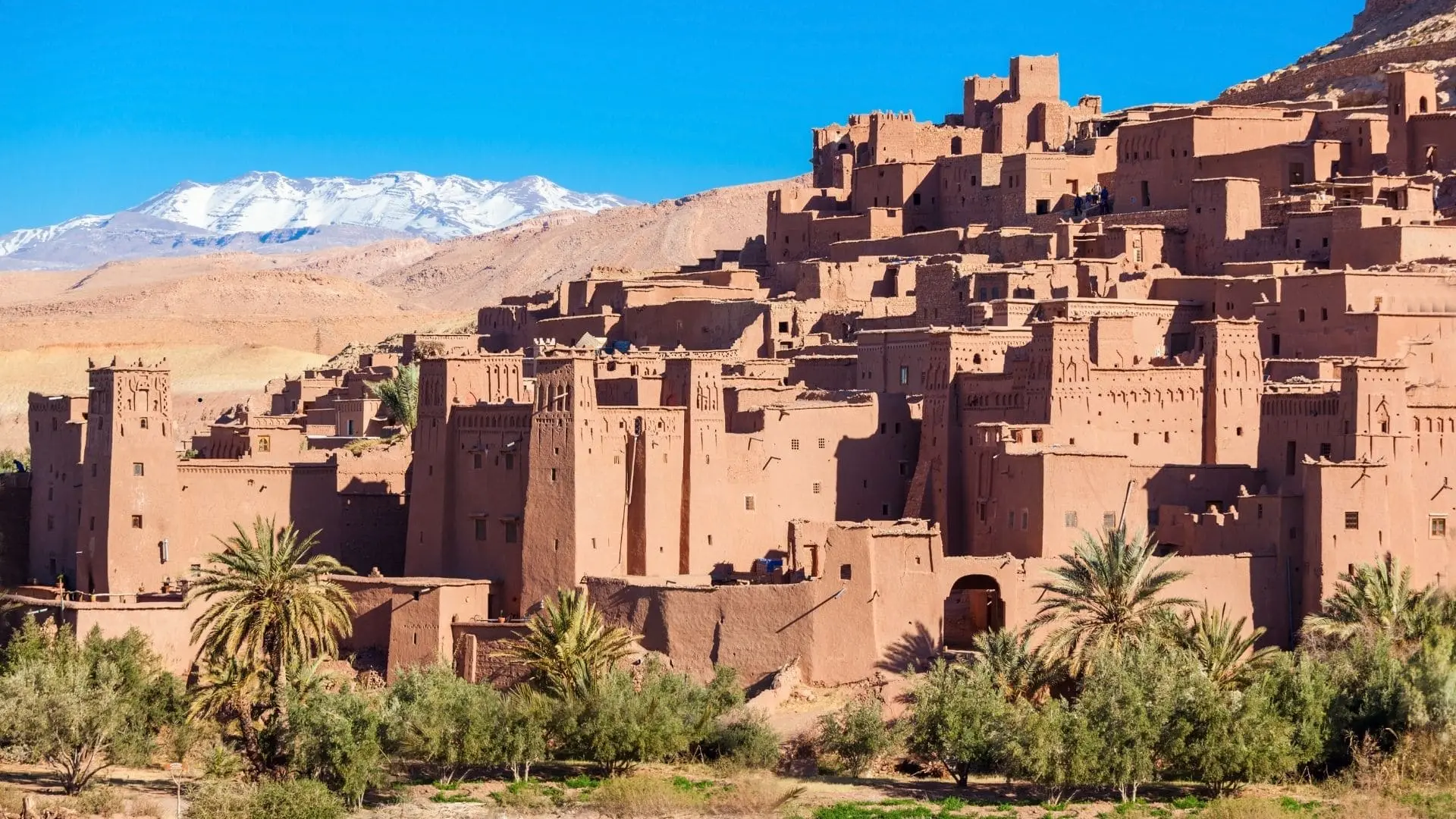
Tucked away in the rugged heart of Morocco, just 30 kilometers from the city of Ouarzazate, lies a place that seems frozen in time: Ait Ben Haddou. This stunning ksar, or fortified village, is one of the most iconic landmarks in the country, captivating travelers with its earthen architecture and ancient mystique. Whether you’re planning a desert adventure or tracing the footsteps of your favorite movie scenes, Ait Ben Haddou promises an unforgettable experience.
Set against the dramatic backdrop of the Atlas Mountains and perched on the banks of the Ounila River, the village enjoys a warm and arid climate most of the year. Summers are dry and hot, often climbing above 35°C (95°F), while winters are mild, with cooler nights. The best time to visit is during spring (March to May) and fall (September to November), when temperatures are comfortable and the light is perfect for photography.
The locals, primarily of Berber descent, speak a mix of Tamazight (Berber language), Moroccan Arabic, and increasingly some French and English due to tourism. Friendly, warm, and proud of their heritage, the people here welcome visitors with genuine hospitality. Their traditional lifestyle, vibrant clothing, and deep respect for the land are all part of what makes this village so culturally rich.
Let’s dive into the untold stories and surprising truths that make Ait Ben Haddou more than just a pretty backdrop.
This post may contain affiliate links. If you book through these links, I may earn a small commission at no extra cost to you.
1. Ait Ben Haddou Has Been Standing for Over 1,000 Years
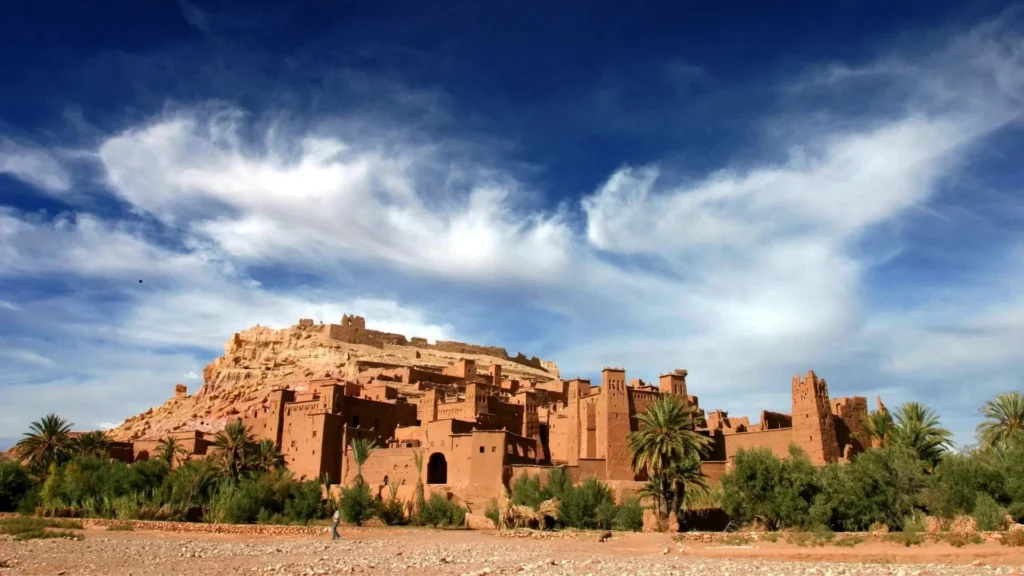
When you walk through the gates of Ait Ben Haddou, you’re stepping back more than ten centuries in time. Historians believe the ksar was founded in the 11th century as part of a strategic network of fortified villages along the ancient caravan routes between the Sahara and Marrakech.
These routes weren’t just trade highways—they were lifelines connecting sub-Saharan Africa to the bustling cities of North Africa and Europe. Goods like gold, salt, ivory, and spices passed through Ait Ben Haddou, carried by camel caravans that spanned thousands of kilometers.
What’s incredible is how this architecture—built from simple materials like earth, water, and straw—has lasted for over a millennium. The reddish walls blend perfectly with the surrounding landscape, a design that’s both practical and poetic. It’s a living example of how Berber ingenuity was far ahead of its time.
If you’re fascinated by Morocco’s desert wonders, don’t miss the breathtaking beauty of the Erg Chebbi Dunes. Located near Merzouga, these towering sand dunes offer a completely different Sahara experience—camel treks, stargazing, and golden sunsets included. Check out our ultimate travel guide for desert lovers to plan your adventure.
2. A UNESCO World Heritage Site Still Full of Life

In 1987, UNESCO recognized the historical and cultural value of Ait Ben Haddou by naming it a World Heritage Site. The designation was meant to protect the ksar’s unique earthen architecture and cultural heritage, which had been slowly deteriorating due to neglect and erosion.
But unlike many heritage sites that become lifeless museums, Ait Ben Haddou remains a living village. A handful of families still reside within the ksar, choosing tradition over convenience. They live without many modern luxuries, maintaining the ancient lifestyle of their ancestors. Their homes don’t have modern plumbing or appliances, and they rely on the surrounding land and tourism for their livelihood.
This mix of ancient preservation and present-day life gives the village a soul you can feel in every dusty alley and sunlit courtyard.
3. A Film Set Like No Other: Over 20 Productions and Counting
You might not know it, but you’ve probably seen Ait Ben Haddou on screen before. This picturesque ksar has played host to an impressive list of films and series. Why? Because it’s one of the few places on Earth that looks like a real, untouched slice of history.
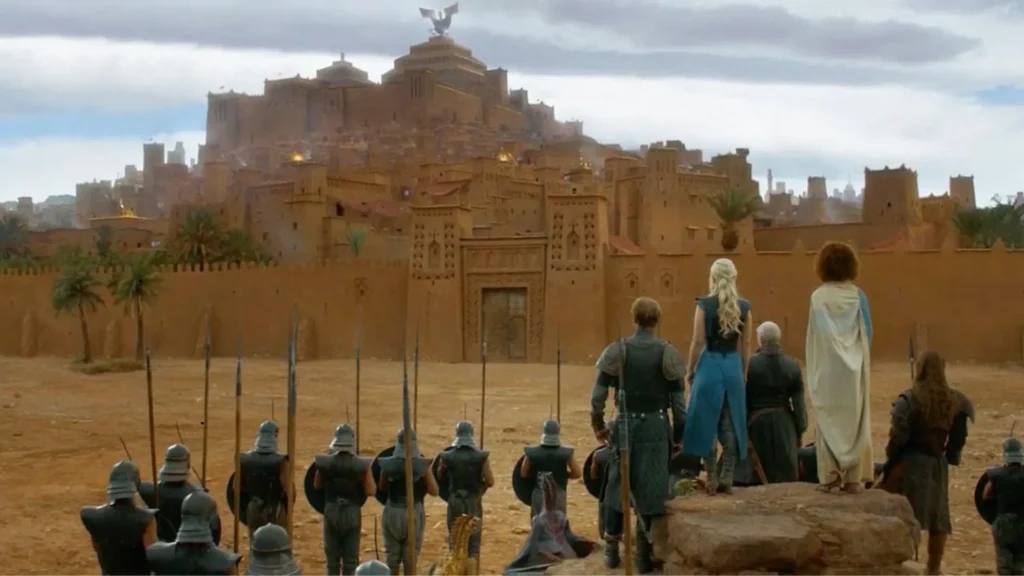
Famous Productions Filmed Here:
- Gladiator (2000) — The colosseum scenes
- The Mummy (1999)
- Game of Thrones — The city of Yunkai
- Lawrence of Arabia (1962)
- Prince of Persia: The Sands of Time (2010)
Movie directors love it for its authenticity, natural lighting, and surreal beauty. No green screens needed—just centuries-old walls, sweeping desert views, and a maze of narrow alleys perfect for cinematic storytelling.
Don’t be surprised if you spot a camera crew during your visit. It’s still an active shooting location.
4. Made of Mud, Straw, and Pure Ingenuity
One of the most mind-blowing facts about Ait Ben Haddou is its construction method. Unlike modern cities built with concrete and steel, this ksar is made almost entirely of mudbrick (adobe), clay, and straw. These traditional Berber building techniques have been passed down through generations.
The walls are thick to keep the interiors cool in the summer and warm in winter. But there’s a catch: these structures require constant upkeep. Without regular maintenance, rain can slowly wash them away. In fact, after every significant rainfall, the villagers often band together to patch and rebuild.
What Makes This Technique So Genius?
- Sustainable and eco-friendly
- Regulates indoor temperature naturally
- Blends harmoniously with the landscape
It’s a construction style that speaks to the deep connection between people and their environment in Moroccan culture.
5. A Toll Gate for Ancient Trade Caravans
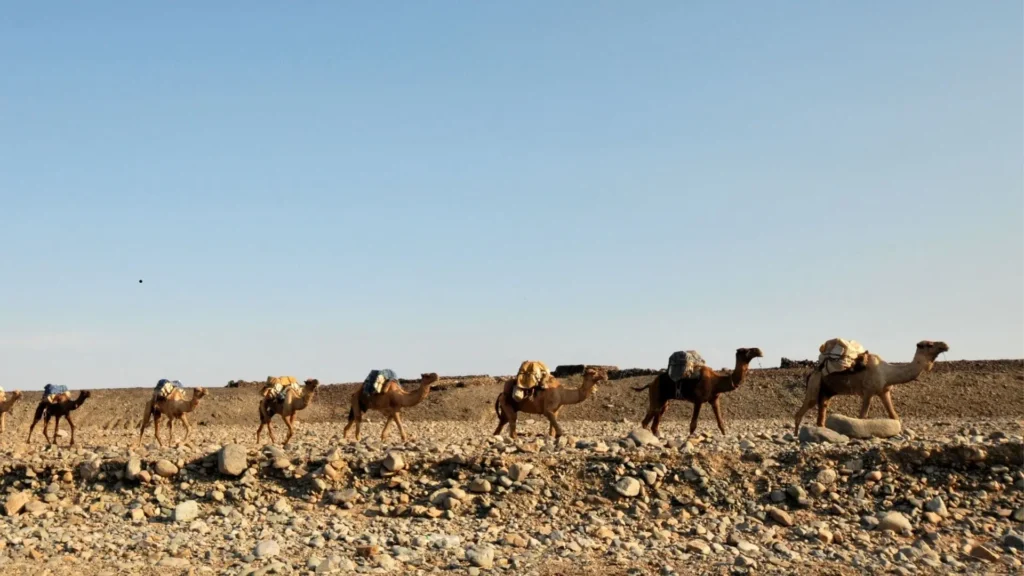
Centuries ago, Ait Ben Haddou wasn’t just a pretty place to live—it was a tax checkpoint on one of the most vital trade routes in North Africa. Caravans loaded with salt from the Sahara, gold from Mali, and spices from the East would stop here to pay tolls and rest.
The strategic location made it a bustling hub. Imagine the scene: hundreds of camels, traders in colorful robes, the aroma of spices in the air, and the rhythmic chants of merchants bartering over goods. The ksar wasn’t just a home; it was a center of economy and diplomacy.
This role in commerce elevated Ait Ben Haddou to a place of political and cultural importance in the region. Today, it remains a symbol of Morocco’s golden age of trade.
Looking to explore more of Morocco’s desert magic beyond Ait Ben Haddou? The Agafay Desert offers a strikingly different landscape—rocky, raw, and peaceful. Discover the top 10 things to do in this hidden gem, from camel rides to dinner under the stars.
6. Electricity Arrived Just in the Late 1990s
It’s hard to believe that this internationally recognized site only received electricity and running water in the late 1990s. Before that, life here was almost completely off-grid.
Families used kerosene lamps for light, hauled water from wells or the river, and cooked over wood fires. These limitations didn’t stop life from thriving—it simply meant people had to rely more on community and tradition.
Even now, some parts of the ksar remain without full access to modern utilities, especially inside the oldest buildings. This gives visitors a glimpse of what life was like in pre-electric Morocco, adding a rare layer of authenticity.
Ready to explore the magic of Ait Ben Haddou up close? Book a guided tour on TripAdvisor today and experience this ancient ksar with expert local guides who bring its stories to life—secure your spot before it fills up!
7. Built to Withstand Invasion and Time
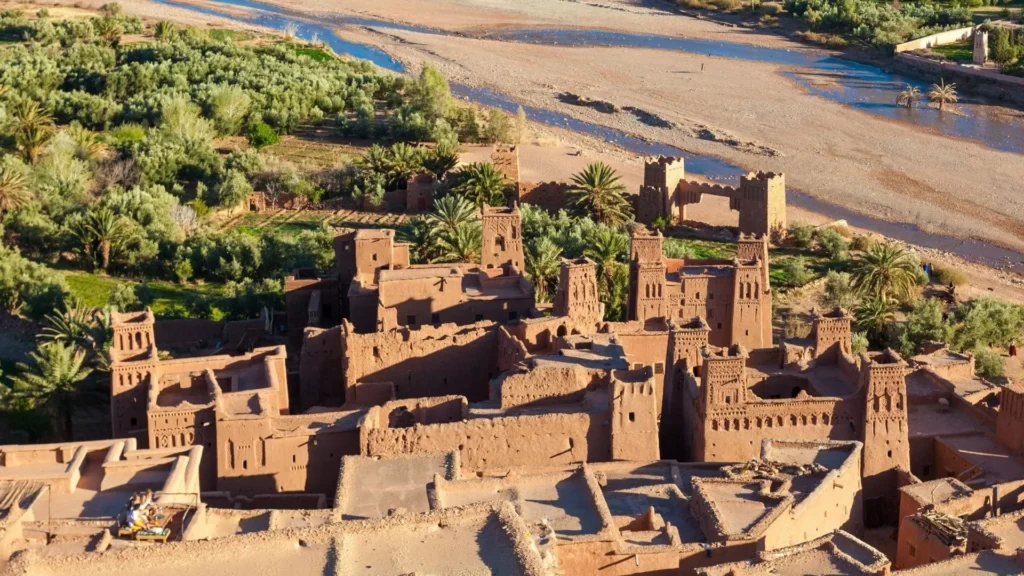
From a distance, Ait Ben Haddou looks like a giant sandcastle carved into the hillside. But there’s purpose behind its beauty: it was built for defense.
Defensive Features Include:
- A strategic hilltop location for wide visibility
- Towering walls and watchtowers
- A single, narrow entrance
- Maze-like alleyways to confuse invaders
This layout made it nearly impossible for hostile forces to overrun the ksar. The high ground provided a tactical advantage, while the thick walls offered protection from both weather and warfare.
In many ways, the defensive strategy is also what preserved the village through centuries of conflict and colonization.
Why Ait Ben Haddou Is Still Worth the Journey
With so much history packed into one small village, Ait Ben Haddou is more than just a photogenic pit stop on your Moroccan itinerary. It’s a living, breathing window into the past, full of stories, people, and traditions that have withstood time.
Whether you’re a history buff, film lover, architecture enthusiast, or simply an adventurer looking for a unique experience, Ait Ben Haddou has something to offer you. Spend a night in a local guesthouse, climb to the top of the hill for the sunset view, and listen to the wind echoing off the mudbrick walls. You’ll walk away not just with photos, but with memories that feel like they’ve been passed down through the centuries.
Ait Ben Haddou isn’t just a destination. It’s a journey through time—and one you’ll never forget.
FAQs
Ait Ben Haddou is famous for its ancient earthen architecture, its status as a UNESCO World Heritage Site, and its appearance in numerous films and TV shows like Gladiator and Game of Thrones. It’s considered one of Morocco’s most iconic ksars.
Yes, while many families have moved to modern homes nearby, a few families still live inside the original ksar. They maintain traditional ways of life and contribute to preserving the site’s heritage.
Ait Ben Haddou is over 1,000 years old, with its origins tracing back to the 11th century. It was an important stop on the ancient caravan route connecting the Sahara to northern Morocco.
Absolutely. There are several guesthouses and small hotels near the ksar, many offering stunning views of the village, traditional Moroccan hospitality, and even guided sunset walks.
Unlike many desert towns, Ait Ben Haddou is a fortified ksar built from mudbrick and perched strategically on a hill. It has been remarkably well preserved and has a unique blend of history, architecture, and cinematic fame.



